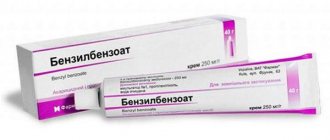Home / Pediatrician / Treatment of chickenpox in children
Chickenpox or chicken pox is a very common disease. The disease is not serious, but unpleasant. Chickenpox is caused by viruses, and this infectious disease is transmitted by airborne droplets.
People get chickenpox only once, after which a person develops lifelong immunity, and in children this disease is much milder than in adults.
The chickenpox virus is very sticky and spreads quickly in closed spaces. Chickenpox most often occurs in children attending preschool and educational institutions. Chickenpox most often occurs in children under 10-12 years of age. In a children's group, as soon as one child catches chickenpox, he becomes contagious to other children. Chickenpox becomes contagious in children one day before the onset of skin rashes. Quarantine ends 5 days after the last rash appears.
Why do chickenpox leave scars?
Chickenpox begins with a feeling of general weakness of the body and high fever. Soon characteristic bubbles with a diameter of 2-5 mm appear on the body. After this, the fever goes away and your health improves noticeably. But bubbles continue to appear in various parts of the body for another 5 days.
After this, the bubbles burst and a crust forms, under which healthy cells are born. Despite the severe itching, it should never be scratched. If you can’t restrain yourself and scratch it, and even until it bleeds, pyogenic bacteria are introduced under the skin. They deeply injure the epidermis, which is why scars and pits appear.
However, in addition to this, there are a number of possible reasons for the appearance of scars after chickenpox :
- Infection in an open ulcer . After scratching the crust, the virus penetrates the upper layer of the epidermis. If you continue to open it further, the infection will penetrate into deeper layers and can radically change the structure of the tissue.
- Lack of personal hygiene . If parents still look after the kids, then teenagers are already responsible for hygiene themselves. It is very easy to introduce dirt into an open wound, but it is difficult to get rid of the consequences.
- Weakened immunity . The body does not have enough strength to fight the virus, so tissue restoration occurs very slowly. Most often, residents of large cities encounter this reason during the off-season in autumn and spring.
- Incorrect selection of medications . Under the influence of “not your” ointment, the crusts fall off before a healthy layer of skin has formed. This way, dirt or infection can get into the upper layer of the epidermis and then go deeper.
- Using anti-scarring medications on a wound that has not yet healed . All anti-scarring agents should be used only after the skin has healed! Otherwise, they will do more harm than help.
- Patient's age . The younger the age, the easier the disease is tolerable. With age, the likelihood of “souvenirs” after chickenpox increases.
- And finally, a not entirely obvious reason - rubbing of clothes or a reaction to synthetics . Many people honestly endure the itching and forget about the rubbing of the crust on clothing, and this is also a concern for the inflamed area.
To avoid all this, you can use pharmaceutical gels and ointments that reduce itching and have antibacterial properties. Or use traditional means: green paint and great willpower not to itch.
Whatever method you choose, it is very important to start treatment on time. That is, apply an application of the product to the combed area as soon as the chicken ulcer opens.
Composition and description of the drug
Zindol is a suspension, the main active ingredient of which is zinc oxide. It has many beneficial properties, so it is widely used in medicine and cosmetology. In addition, the drug contains:
- distilled water;
- glycerol;
- medical talc;
- ethanol
Tsindol is a white suspension
Tsindol looks like a heterogeneous mass of white or grayish color. After shaking, a precipitate quickly separates out. The suspension is in a dark glass bottle, sealed with a polyethylene stopper and closed with a plastic cap. It is placed in a cardboard package complete with instructions.
The drug should be stored in a dark place at a temperature of no more than 25 °C. The shelf life is 2 years.
Prevention of scars after chickenpox
To reduce the likelihood of pockmarks or pits appearing, it is not enough to only monitor the condition of the crust and bubbles. Hygiene is also important.
It is recommended to change bed linen once a day: pillowcase, sheet, duvet cover - all of this is in contact with the patient’s face and body. The infection persists in the underwear, and if you use it for a long time, you can add the same virus to the unhealed wound that the body is trying to fight.
And your nails should also be clean: if you scratch the wound until it bleeds, in addition to the virus, microbes from under the nails can be introduced into the epidermis. To avoid scars after chickenpox, babies even wear mittens.
The rash must be disinfected every day with special solutions, ointment or regular brilliant green. And if chickenpox is particularly severe, doctors prescribe antiviral drugs.
In addition to the antibacterial effect, all ointments used for chickenpox cool the inflamed area and relieve itching.
Possible complications
- Aesthetic skin problems. After pockmarks, there may be blisters on the skin, small potholes, like after acne, etc., which cannot always be eliminated later.
- Pneumonia. Most often this happens to children whose immunity is significantly weakened.
- Brain damage (so-called “chickenpox encephalitis”). A rare but possible phenomenon associated with chickenpox, in which certain areas of the brain are temporarily “attacked.” Which, accordingly, causes disorder of behavior and facial expressions, tremors and loss of coordination. However, with proper therapy it can be successfully treated.
- Reye's syndrome (“acute hepatic encephalopathy”). This is a very rare, but at the same time very serious disease, which, according to some medical studies, occurs due to the use of drugs based on acetylsalicylic acid (for example, aspirin) in the treatment of chickenpox.
It should be remembered that most complications with chickenpox (as with other viral infections) occur due to dehydration. Give your child plenty of water and the risk of any complications will be significantly reduced.
How to treat scars after chickenpox?
After recovery, scars and pockmarks will not remain, but only if you followed all the doctor’s recommendations and treated the wounds with an antiseptic. If traces of chickenpox are still present, you can get rid of them in different ways. It can be:
- salon treatments;
- creams, gels or ointments;
- ethnoscience.
The choice of a particular procedure depends on the size of the scars or pockmarks, their number, the desired speed of effect and, of course, the presence of contraindications.
Let's consider each method of getting rid of scars after chickenpox in more detail.
Salon treatments
As a rule, this method is chosen in the case of treating deep mature pockmarks in an adult. For children, many procedures are more likely to harm than correct the situation, so they usually try not to touch very noticeable scars on a child.
Salon treatments for scars include:
- Peeling . Treatment of leather with chemical acids. The rehabilitation period after the procedure lasts from a week to a month. During this time, you need to carefully monitor your skin, avoid sunlight, dust, and minor damage.
- Grinding . Laser removal of damaged top layer of skin. Does not require preliminary preparation; it acts in a targeted manner without affecting healthy tissue. Small scars can be removed in one session, but larger ones will require several procedures. Laser resurfacing is contraindicated for pregnant, breastfeeding women and those who had peeling less than 2 weeks before the procedure.
- Microdermabrasion . Removal of the top layer of skin with microcrystals. It will help with small scars; large scars and deep pockmarks will be made less noticeable. Aluminum dioxide particles under pressure penetrate into the deep layers of the skin, and the vacuum pulls them out along with dead cells. This process is traumatic and requires long-term restoration of the skin.
- Wrap . The most harmless of the listed methods: smoothing the skin, evening out the overall tone and smoothing out traces of chickenpox. A medicinal substance is applied to previously cleansed skin, wrapped in film and covered with a thermal blanket. After the session, the product does not need to be washed off.
- Physiotherapy: electrophoresis, phonophoresis . Transfer of useful substances deep into the damaged area of the epidermis using ultrasound (with phonophoresis) or electricity (with electrophoresis). Can be used as a prophylaxis against scars immediately after an exacerbation of chickenpox.
- Injections . Used when there are large depressions on the face. Hyaluronic acid or various cocktails are injected under the skin. They fill the pockmark, making it convex - the surface of the skin is leveled. Over time, the drug is absorbed and pockmarks appear again: the injection should be repeated every six months to a year. However, the injections will not have any effect if you treat old scars.
Before starting any cosmetic procedure, be sure to consult your doctor about contraindications and its necessity in your individual case.
Find out which method of correcting scars and stretch marks is optimal for you!
doctor Svetlana Viktorovna Ogorodnikova.
doctor
Creams, gels, ointments
Applications of cream, gel or ointment for scars do not create such discomfort as any of the salon procedures, and they can be used by children.
It is worth remembering that anti-scar cosmetics should be applied only to an existing scar, but not to an open wound. To remove the consequences of chickenpox, he usually recommends the following remedies:
- Medgel;
- Bepanten;
- Sledotsid;
- Kelofibrase;
- Keratan;
- Zinc ointment;
- Fermenkol;
- Contractubex;
- Mederma;
- Methyluracil;
- Dermalix;
- Zeraderm Ultra.
Some of them give results faster, while others are used for six months or more before the pockmark disappears. They are chosen based on the age of the scar, price, personal contraindications and recommendations of the attending physician.
ethnoscience
For lovers of everything natural, “grandmother’s” recipes are suitable, which anyone can prepare at home:
- Lubricate your face with a slice of cucumber;
- Apply simmered onion over low heat to the pock marks (cook for about 15 minutes);
- For 1 teaspoon of cocoa butter, dilute 3 drops of sandalwood and tea tree essential oil. Rub into scars or pockmarks using massage movements.
- Pour boiling water over 1 tablespoon of dried marshmallow and leave for 8 hours. Wipe the skin with the solution up to 5 times a day.
- Finely ground oatmeal. Pour boiling water over and cool. Apply the paste for 30 minutes to adults and children.
The advantages of traditional medicine are that most recipes, with rare exceptions, are suitable for both adults and children. However, the visible effect will not appear immediately - you will have to be patient for six months, a year.
How to deal with scars after chickenpox in children
Salon procedures are not recommended for the delicate skin of a child, but cosmetics and folk recipes can cope with small pockmarks and scars.
But not all pharmacy products are indicated for children; some creams have age restrictions. Among those that are definitely suitable for children in especially serious cases:
- Medgel. Softens the skin, smoothes out pockmarks;
- Zeraderm Ultra. Will help with old pockmarks for more than a month;
- Kelo-cat resolves compactions, stimulates the formation of healthy tissue;
- Dermatix. Evens out tone and moisturizes the skin.
The course of any of these ointments is selected individually, on average it is about 2 months. Applications are made in a thin layer at night and in the morning.
Effective against small young scars:
- Contractubex;
- Bepatenol;
- Dexpatenol;
- Dermatix;
- Rescuer;
- My Sunshine;
- Children's cream for bruises and abrasions.
If you do not neglect the consequences of the disease and take timely measures, your child’s skin will be healthy and clean in just a few months.
Contraindications and side effects
The manufacturer does not recommend using Tsindol if you are hypersensitive to its components. Do not apply the mash to the area around the eyes. If the medicine gets into your eyes, they should be rinsed with plenty of water.
The drug is usually well tolerated, but in some cases side effects may occur. Local allergic reactions may occur in the area of application, which include redness, rash, and increased itching. In this case, you should stop using the product.






